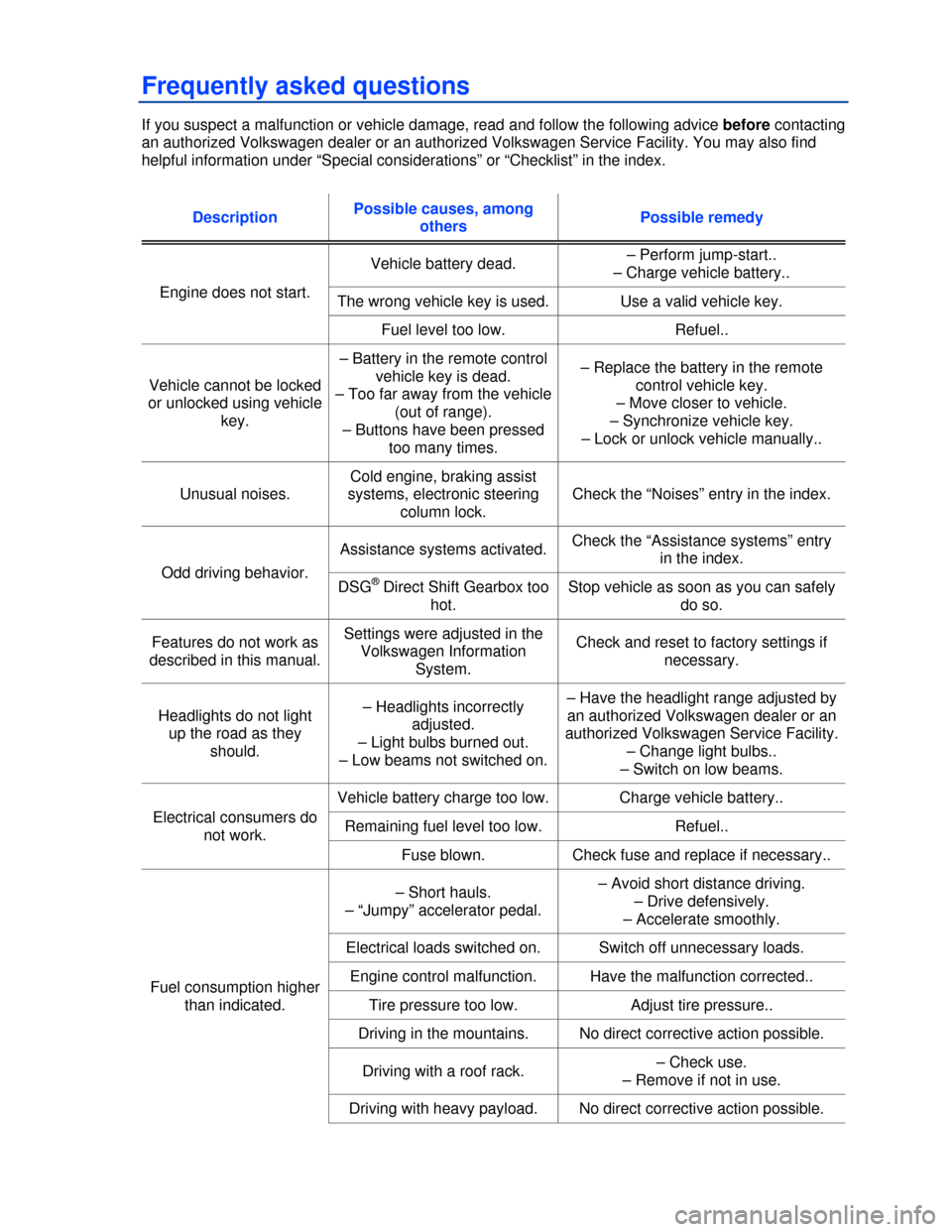Page 12 of 268
The red zone at the end of the scale indicates maximum permissible engine rpm (revolutions
per minute) for all gears after the break-in period. Before reaching the red zone, select the next
higher gear or selector level position D, or ease your foot off the accelerator ⇒ .
(2) Speedometer.
(3) Fuel gauge..
(4) Reset button for the �4�2�)�0 odometer display (trip).
– Push the �E �
Page 13 of 268
– Digital stopwatch with hour, minute and second display (one tenth of a second intervals are
shown up to 59 minutes and 59 seconds when the ignition is switched on).
– Digital display with stop function selected.
(3) Boost pressure indicator
The boost pressure indicator shows the pressure in the boost pressure duct between the su-
percharger or turbocharger and the engine. The farther right that the indicator points on the
gauge, the higher the pressure in the boost pressure duct and the greater the output from the
engine. The word “Turbo” on the gauge indicates the system is charged.
(4) Start / Stop / Reset button
– Stopwatch mode: press the button �E �
Page 17 of 268
The red zone at the end of the scale indicates maximum permissible engine rpm (revolutions
per minute) for all gears after the break-in period. Before reaching the red zone, select the next
higher gear or selector level position D, or ease your foot off the accelerator ⇒ .
(2) Speedometer.
(3) Fuel gauge..
(4) Reset button for the �4�2�)�0 odometer display (trip).
– Push the �E �
Page 18 of 268
– Digital stopwatch with hour, minute and second display (one tenth of a second intervals are
shown up to 59 minutes and 59 seconds when the ignition is switched on).
– Digital display with stop function selected.
(3) Boost pressure indicator
The boost pressure indicator shows the pressure in the boost pressure duct between the su-
percharger or turbocharger and the engine. The farther right that the indicator points on the
gauge, the higher the pressure in the boost pressure duct and the greater the output from the
engine. The word “Turbo” on the gauge indicates the system is charged.
(4) Start / Stop / Reset button
– Stopwatch mode: press the button �E �
Page 236 of 268

Frequently asked questions
If you suspect a malfunction or vehicle damage, read and follow the following advice before contacting
an authorized Volkswagen dealer or an authorized Volkswagen Service Facility. You may also find
helpful information under “Special considerations” or “Checklist” in the index.
Description Possible causes, among
others Possible remedy
Engine does not start.
Vehicle battery dead. – Perform jump-start..
– Charge vehicle battery..
The wrong vehicle key is used. Use a valid vehicle key.
Fuel level too low. Refuel..
Vehicle cannot be locked
or unlocked using vehicle
key.
– Battery in the remote control
vehicle key is dead.
– Too far away from the vehicle
(out of range).
– Buttons have been pressed
too many times.
– Replace the battery in the remote
control vehicle key.
– Move closer to vehicle.
– Synchronize vehicle key.
– Lock or unlock vehicle manually..
Unusual noises.
Cold engine, braking assist
systems, electronic steering
column lock.
Check the “Noises” entry in the index.
Odd driving behavior.
Assistance systems activated. Check the “Assistance systems” entry
in the index.
DSG® Direct Shift Gearbox too
hot.
Stop vehicle as soon as you can safely
do so.
Features do not work as
described in this manual.
Settings were adjusted in the
Volkswagen Information
System.
Check and reset to factory settings if
necessary.
Headlights do not light
up the road as they
should.
– Headlights incorrectly
adjusted.
– Light bulbs burned out.
– Low beams not switched on.
– Have the headlight range adjusted by
an authorized Volkswagen dealer or an
authorized Volkswagen Service Facility.
– Change light bulbs..
– Switch on low beams.
Electrical consumers do
not work.
Vehicle battery charge too low. Charge vehicle battery..
Remaining fuel level too low. Refuel..
Fuse blown. Check fuse and replace if necessary..
Fuel consumption higher
than indicated.
– Short hauls.
– “Jumpy” accelerator pedal.
– Avoid short distance driving.
– Drive defensively.
– Accelerate smoothly.
Electrical loads switched on. Switch off unnecessary loads.
Engine control malfunction. Have the malfunction corrected..
Tire pressure too low. Adjust tire pressure..
Driving in the mountains. No direct corrective action possible.
Driving with a roof rack. – Check use.
– Remove if not in use.
Driving with heavy payload. No direct corrective action possible.
Page 252 of 268

WARNING
Changing a wheel, especially on the side of the road, can be dangerous. To help reduce the
risk of serious personal injury:
�x Always stop the vehicle as soon as it is safe to do so. Move the vehicle a safe distance off
the road where it is safe to change the wheel.
�x Always make sure that all passengers, especially children, are in a safe place outside the
vehicle and away from the vehicle and traffic (such as behind a guard rail).
�x Turn on the emergency flashers and set up another warning device about 25 yards
(25 meters) behind the vehicle to warn approaching traffic.
�x Change a wheel by yourself only if you are familiar with the necessary steps. Otherwise,
get expert assistance.
�x Always switch the engine off, firmly apply the parking brake, and shift the transmission
into Park (P) (automatic transmission) or any gear (manual only) to help prevent the vehicle
from moving suddenly and slipping off the jack.
�x Always make sure that the ground is level and firm. If necessary, place the jack on a large
and sturdy board or on a similar ground support.
�x Always block the wheel diagonally opposite the wheel being changed with chocks or other
similar things.
�x Always use proper and undamaged tools when changing a wheel.
�x Once a wheel is lifted off the ground, having the transmission in Park (P) or in gear will not
prevent sudden vehicle movement.
�x Always use a jack that has been approved by the manufacturer for your vehicle. Never use
other jacks, even if they have been approved for use on other Volkswagen models.
�x To reduce the risk of losing control, crashes, and serious personal injuries, never loosen
the screws on rims with threaded rim rings.
�x After changing a wheel, have the wheel bolt tightening torque checked with an accurate
torque wrench.
�x After changing a wheel or tire, reset the Tire Pressure Monitoring System..